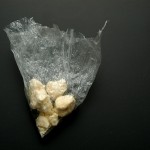Crack In America
Crack in America
 In the 1980’s a new drug hit the streets of America and an American drug epidemic was born. Crack, as it was known then and now was a derivative of the more expensive street drug “Cocaine”. Cocaine was very popular among the white American upper class and was a bit too expensive for main stream America. The illicit drug industry, always in search of a new way to addict the public and make more and more money introduced Crack cocaine to America and to the world.
In the 1980’s a new drug hit the streets of America and an American drug epidemic was born. Crack, as it was known then and now was a derivative of the more expensive street drug “Cocaine”. Cocaine was very popular among the white American upper class and was a bit too expensive for main stream America. The illicit drug industry, always in search of a new way to addict the public and make more and more money introduced Crack cocaine to America and to the world.
Where Did It Come From?
No one really knows when, where or by whom Crack was invented but what is evidently clear is the aftermath of Crack. It is estimated that millions of Americans were negatively affected by Crack in one way or another. But no one group of Americans has been affected more by the Crack epidemic than African Americans.
Crack and the CIA
It’s well documented that the Central Intelligence Agency (CIA) pumped large amounts of Cocaine (the main ingredient of Crack Cocaine) into the urban American predominantly Black and Latino communities. The drug was sold to inner-city gang members and individuals by government agencies and the money made from the sale of it was used to fund the US rebel army in Nicaragua.
Contras
According to the San Jose Mercury News, a San Francisco Bay Area drug ring comprised of the CIA and U.S. Drug Enforcement Agency (DEA) agents and informants, sold tons of cocaine to the Crips and Bloods street gangs of Los Angeles. The money made from the sale of the drugs was reportedly funneled to a group known as the Fuerza Democratica Nicaraguense (Nicaraguan Democratic Force) otherwise known as the Contra Rebels. The ‘Contras” were the anti-Communists group that was fighting the Sandinista government. They (the Contras) were comprised of about 5,000 or so men who were created around 1981 and were trained, run and financed by both the CIA, the DEA and the Nicaraguan government. This illegal drug network backed in large part by the CIA opened up the Crack Cocaine pipeline that directly linked the Columbian Cocaine Cartels with the Black communities of California. (Mercury News)
After $$$ Math
The aftermath of the Crack epidemic is addiction, psychosis, destroyed communities and families, convictions and the death toll. The DEA estimates that Cocaine kills about 10,000 people in the U.S. each year. In 1989, when the Crack epidemic was in full swing, an August 6, 1989 article published in the Washington Post estimated 30,000 to 50,000 babies were being born addicted to Crack Cocaine each year. Many of these babies today have grown into adulthood and now exhibit social, economic and behavioral problems directly related to Crack cocaine.
Lock Them Up and Throw Away the Key
Another result of the Crack epidemic is the thousands who were convicted and sent to prison for possessing and selling the drug. The Anti-Drug Abuse Act of 1986 established sentencing guidelines for the possession and sale of Crack cocaine that were disproportionately larger and more severe than those sentencing guidelines for powder cocaine. Some would argue that the sentencing guidelines were and despite the current changes, still are racially biased. Black and Latinos were/are the recipients of the more severe minimum mandatory sentences because more Whites were attributed with powder cocaine and more Black and Latinos, as a result of government involvement and economic status were being arrested for the cheaper and more accessible Crack. In fact, it took 100 times more powder cocaine than crack cocaine for a person to receive penalties. This disproportionate sentencing guideline was known as the “100 to 1 Ratio”. (United States Sentencing Commission)
Narconon cocaine treatment centers provides effective treatment.
100 to 1
The first arrest for less than 5 grams of crack cocaine versus less than 500 grams of powder cocaine got a defendant a statutory penalty range of zero to 20 years in prison. The mandatory minimum penalty for a defendant arrested for the first time for trafficking 5 grams or more of crack cocaine to 500 grams or more of powder cocaine was 5 to 40 years in prison. The first-time minimum mandatory sentence for 50 grams of crack cocaine or 5,000 or more grams of powder cocaine ranged is from 10 years in prison to life. (United States Sentencing Commission; Anti-Drug Abuse Act of 1986)
The 2007 Crack Cocaine
In November of 2007, the Commission (Amended the Drug Quantity Table in USSG §2D1.1) amended the sentencing guideline. (2007 Crack Cocaine Amendment). The 2007 Crack Cocaine Amendment would retroactively take effect until March 3, 2008.
Sentencing Commission Reduces Prison Terms
On June 30, 2011 the US Sentencing Commission’s unanimously voted to make new federal crack cocaine sentencing guidelines retroactive.
According to the internationally recognized organization Human Rights Watch, the sentence reductions made by the Fair Sentencing Act will include the right to be “free of racial discrimination” as well. The guidelines also reduce sentences for crack cocaine possession but more reforms are needed for America to fully comply with international human rights said Human Rights Watch.
18-1
President Barack Obama signed the Fair Sentencing Act (FSA) into law in 2010. It reduced the differences in federal sentencing for crack cocaine in comparison to the sentences for powder cocaine. Before the FSA, a person convicted of possessing crack cocaine got the same mandatory prison sentence as someone caught with 100 times that amount of powder cocaine. The Fair Sentencing Act simply increased the amounts of crack cocaine that can get a person a mandatory minimum sentence and that, according to Human Rights Watch, “reduces the differential from 100-1 to 18-1.”
Retroactive
Furthermore, according to Human Right Watch, the US Sentencing Commission must “change” the current drug weights for crack cocaine sentences in the US Sentencing Guidelines. As of June 30th, 2011 the changes stressed in the FSA are retroactive.
Conclusion
Finally, by no means does this article intend to make any excuse for the manufacture, distribution, sale and use of Crack cocaine. Those who profit from these drugs and other illicit drugs are criminals and should be dealt with accordingly and those who use and abuse drugs need to seek treatment. However, it is just as important to stress all the facts about the “War on Drugs” and epidemic caused by them if we are sincere about combating drug abuse in this country. Get the facts.
